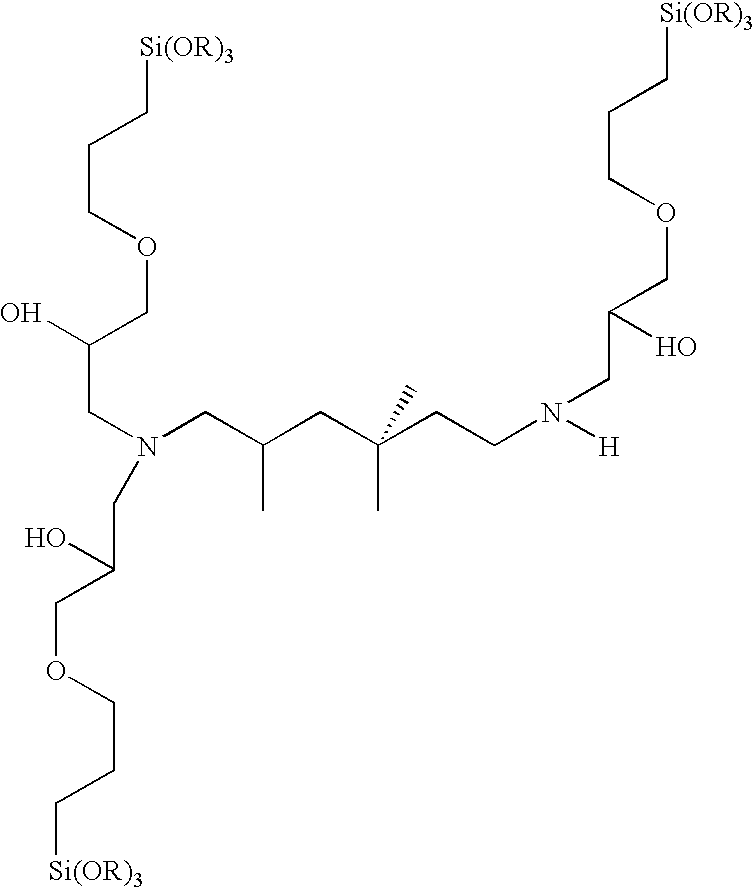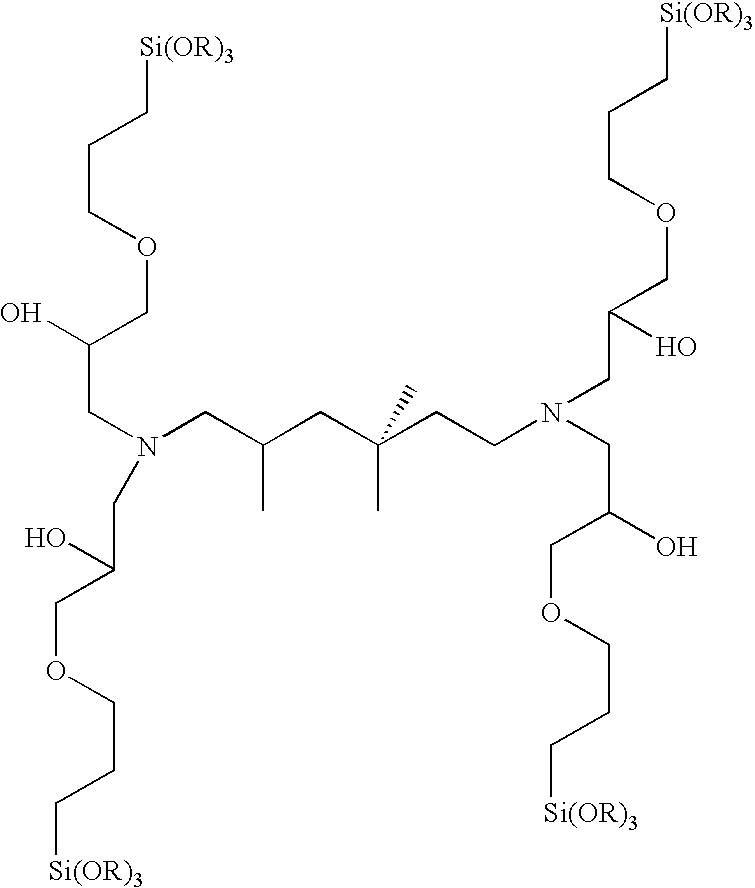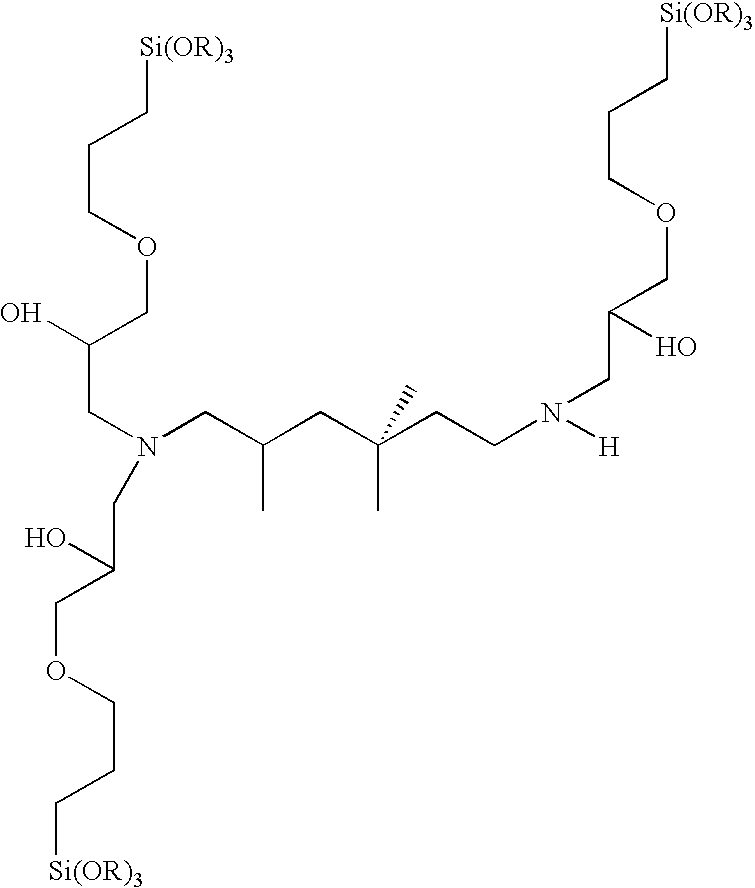Composition for coating of aluminum
a technology of composition and aluminum, applied in the field of composition for aluminum coating, can solve the problems of not meeting the same performance standard, rust or other undesirable effects, and the use of chromates is under ever-tightening regulations
- Summary
- Abstract
- Description
- Claims
- Application Information
AI Technical Summary
Benefits of technology
Problems solved by technology
Method used
Image
Examples
example 1a
Synthesis of TG13
A 3:1 molar ratio of 3-glycidoxypropyltrimethoxysilane(GPS) and C,C,C-trimethyl-1,6-hexanediamine(TMH) is added to an equal weight of ethyl alcohol. The mixture is allowed to react at 70° C. for 3 hours. The reaction products are subsequently neutralized with a 20% excess (based on stoichiometry) of acetic acid.
example 1b
Testing of TG13
The neutralized silane concentrate of Example 1a is diluted with water to 5% silane (by weight) and applied to aluminum panels by dip-coating.
The panels dip coated with this Coating Mixture are first baked in an oven at 120° C. for about 0.5 hours and then further coated with about 20 microns of white polyester based paint, obtained from Sherwin Williams Coatings Company. The white painted panels are then subjected to an ASTM BI 17 condition Neutral Salt Spray Corrosion test. After 3000 hours of salt spray, no paint loss or blistering is found along the scribe lines.
The conclusion reaches is that the Coating Mixture comprising TG13 bonds the paint to aluminum very well even when the aluminum is exposed to humid and corrosive conditions.
example 2
Example 2a
Synthesis of TG14
A 4:1 molar ratio of 3-glycidoxypropyltrimethoxysilane(GPS) and C,C,C-trimethyl-1,6-hexanediamine(TMH) is added to an equal weight of ethyl alcohol. The mixture is allowed to react at 70° C. for 3 hours. The reaction products are subsequently neutralized with a 20% excess (based on stoichiometry) of acetic acid.
PUM
| Property | Measurement | Unit |
|---|---|---|
| composition | aaaaa | aaaaa |
| adhesion | aaaaa | aaaaa |
| surface area | aaaaa | aaaaa |
Abstract
Description
Claims
Application Information
 Login to View More
Login to View More - R&D
- Intellectual Property
- Life Sciences
- Materials
- Tech Scout
- Unparalleled Data Quality
- Higher Quality Content
- 60% Fewer Hallucinations
Browse by: Latest US Patents, China's latest patents, Technical Efficacy Thesaurus, Application Domain, Technology Topic, Popular Technical Reports.
© 2025 PatSnap. All rights reserved.Legal|Privacy policy|Modern Slavery Act Transparency Statement|Sitemap|About US| Contact US: help@patsnap.com



